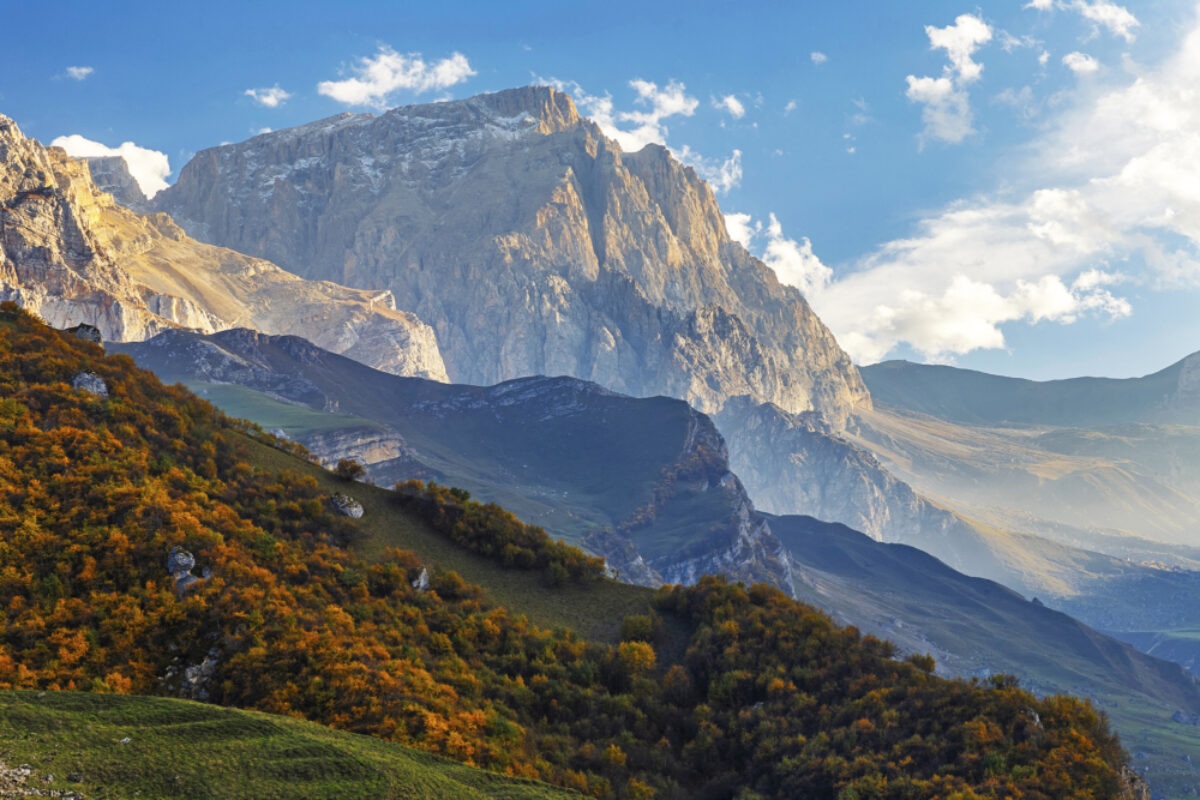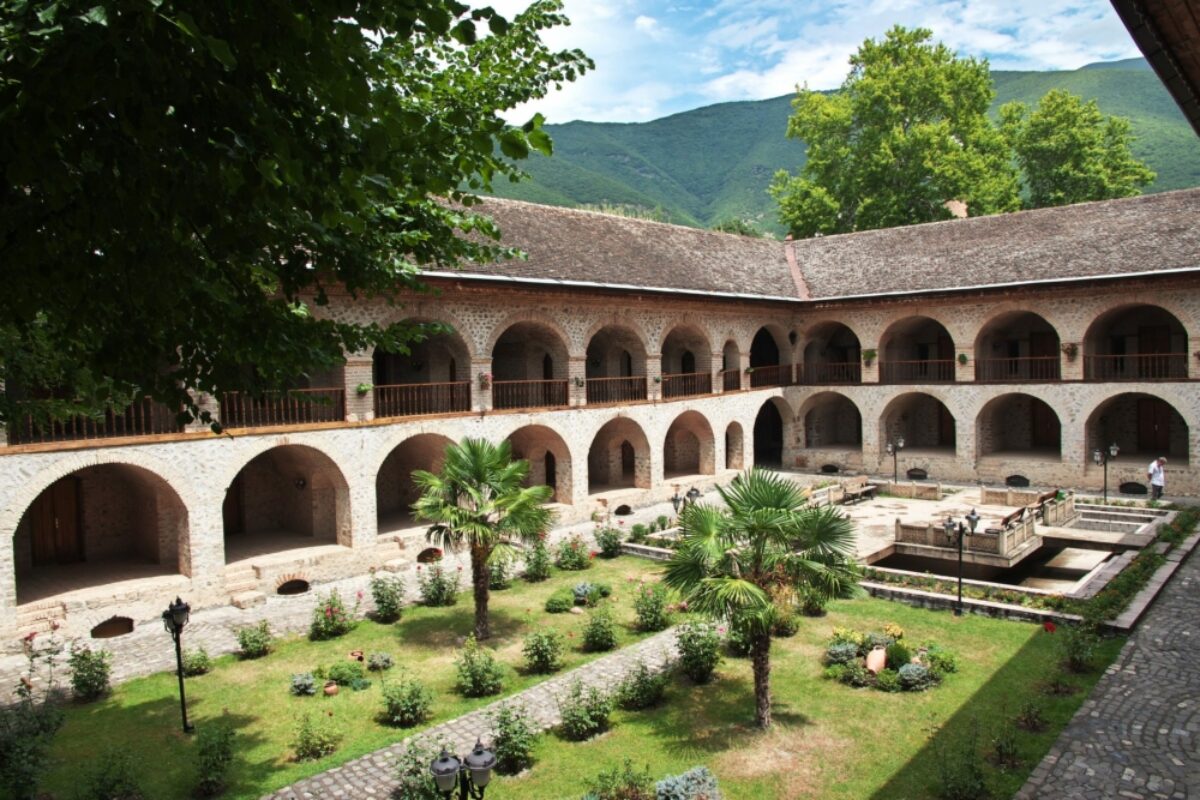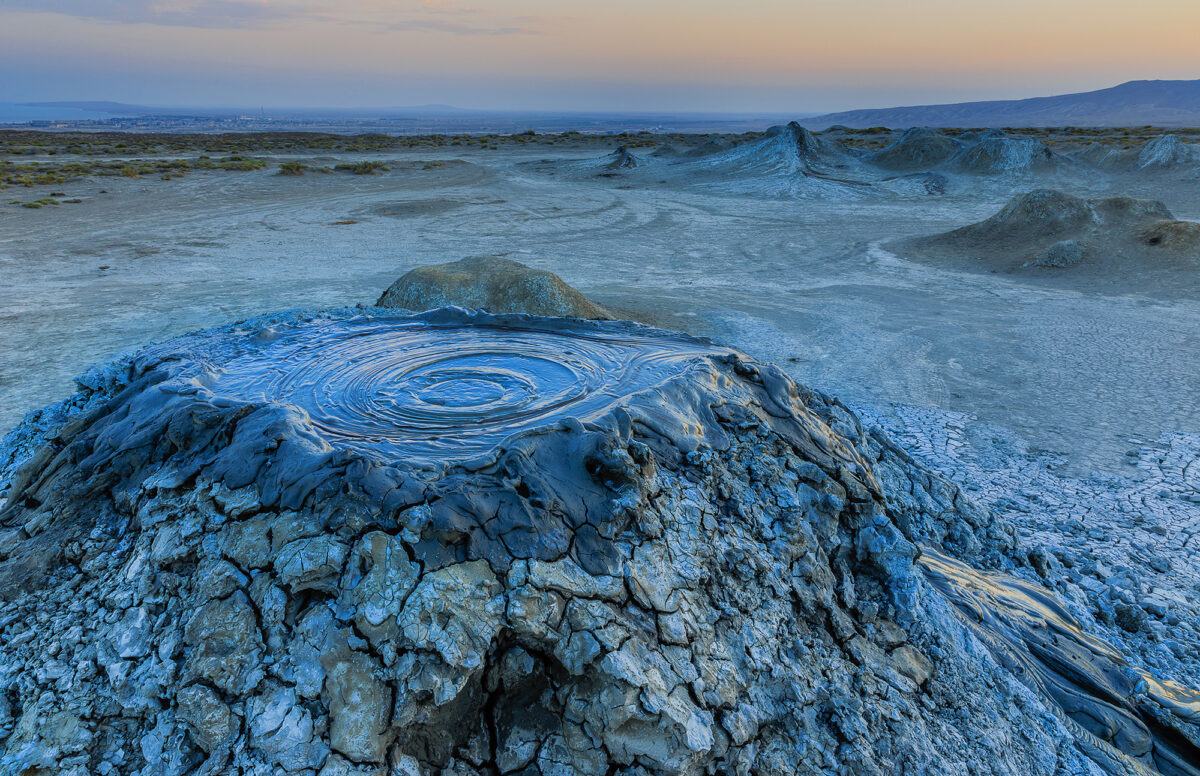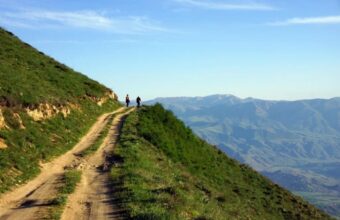Best Treks & Hikes In Azerbaijan
The best hiking routes in the Azerbaijan Caucasus
Trekking and hiking routes in Azerbaijan are much less developed than in Georgia or Armenia. Unless you opt for wild hiking, your hiking options are likely to be limited to day treks or national parks. If you’re heading to the mountains, you’ll only be able to trek during the summer months of April to October.

Autumn at Shahdag Mountain
Caucasus mountain villages
Azerbaijan is home to plenty of mountain villages offering a taste of rural life, historic culture and trekking routes. You can choose a multi-day route between several villages, or base yourself in one of the three main villages below for day hikes. Accommodation is primarily in homestays, with routes normally well-marked.
Quba
Nestled into the slopes of the Shahdag Mountain, the town Quba is home to 40,000 residents with many more spread across several different villages in the region. Set between dramatic canyons and deep valleys, the region is the perfect place for remote hiking on cattle paths and the chance to interact with traditional Azeri shepherd families.
Xinaliq
The remote village of Xinaliq has become more accessible to adventurous hikers after the building of a paved road from Quba. Sitting at 2,350m above sea level, Xinaliq is the highest village in Europe and has several trekking routes. Perhaps the easiest is the hike to the nearby town of Qalayxudat, which follows on an old road between the two settlements.
Xinaliq itself is a fascinating place to visit. Its inhabitants still speak their own language (called Ketch) and believe they are descended from Noah.
Laza
Laza is much smaller than Xinaliq and feels even more remote. Surrounded by waterfalls and misty mountains, there are plenty of day hike trails to follow here, either with a local guide or independently. Perhaps the most popular route is from Laza to the village of Kuzun, taking in waterfalls, streams and mountain views. Expect this hike to take up a full day.
In winter, Laza becomes Azerbaijan’s main ski resort with locals descending on the mountain village, giving it a completely different feel.

The Khan's Palace in Sheki
Sheki to the Gelersen Goresen Fortress
Once a trading stop on the historic Silk Road, Sheki is now a popular tourist destination for those wanting to explore Azeri architecture — particularly at the historic Sheki Khan Palace — and for craftworks such as shebeke, glass mosaics set in wooden latticework.
There are several trails around Sheki that make for pleasant day walks, but a particular favourite is the hike to the Gelersen Goresen Fortress that towers above the city. Despite dating back to the 8th or 9th century, the fortress got its current name in the 1700s when Sheki was ruled by Persians. An assistant to the regional ruler called Haji Chalabi Khan rebelled against his superiors and took refuge in the fort along with the surrounding population.
When the Persians sent a message to Khan asking for his surrender, he simply replied ‘you will come and see’. Outraged, the Persians launched attack after attack on the fort, but its strategic position meant Khan was able to withstand the assault until the Persians withdrew and he became the ruler of Sheki area. Since then, the fortress has been known as ‘Gelersen Goresen’ Fortress — translated as ‘will come, will see’ from Azeri.
Hiking to the fortress isn’t easy. There aren’t any signed trails or specific routes, so the best bet is to take a guided walk from Sheki. You’ll cross the Kish River, pass a slate mine and ascend a steep hillside to get to the remains of the fortress, which have largely been left to nature. However, there are excellent views towards Sheki and across to Dagestan.

A mud volcano in Gobustan National Park
Gobustan National Park
An hour’s drive from Baku near the Caspian coast, Gobustan National Park’s mud volcanoes, mountains and rock art make it the perfect place to try a few day hikes.
Gobustan is probably best known for its mud volcanoes. More than half the world’s mud volcanoes are found in Azerbaijan, and Gobustan has more than its fair share. Mud volcanoes are actually more like mud geysers, with methane and carbon dioxide being released from the holes causing the mud to bubble and boil. The hot climate causes the mud to solidify rapidly, creating cracks and fissures in the floor.
The other big attraction of Gobustan are its petroglyphs. These rock carvings were made by early humans and depict life up to 40,000 years ago, with images of goats, lions and big game, as well as pregnant women and dancing men. Head to the nearby Gobustan Nature Museum for more information on the carvings and their history.






